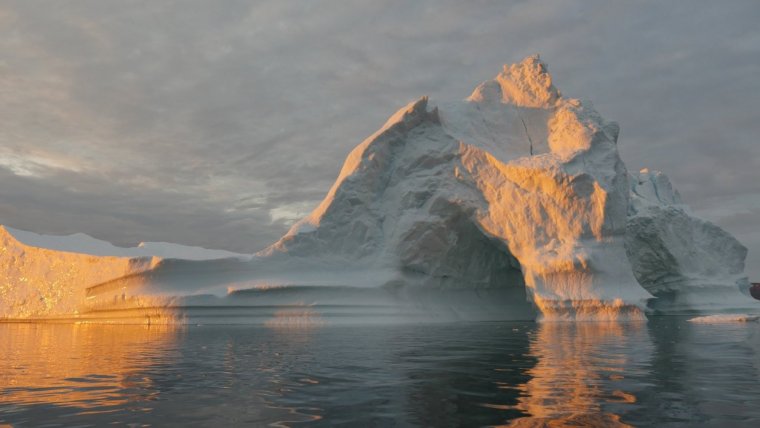| News / World News |
The Hidden Meltdown of Greenland
NASA | SEPTEMBER 22, 2015
More than 90 percent of our planet’s freshwater ice is bound in the massive ice sheets and glaciers of the Antarctic and Greenland. As temperatures around the world slowly climb, melt waters from these vast stores of ice add to rising sea levels. All by itself, Greenland could bump sea levels by 7 meters if its ice melted completely.

An iceberg floats in Disko Bay, near Ilulissat, Greenland. ![]()
In August 2014, Eric Rignot, a glaciologist working at the University of California, Irvine and NASA's Jet Propulsion Laboratory, led a team in mapping ice cliffs at the front edges of three outlet glaciers in Greenland. The researchers found cavities that undercut the base of these leading edges that can destabilize the ice front and enhance iceberg calving, the process where parts of the glacier break off and float away.
They found that Greenland's glaciers flowing into the ocean are grounded deeper below sea level than previously measured. This means that the warm ocean currents at depth can sweep across the glacier faces and erode them.
The team is providing critical information needed to document this effect and accurately predict where and how fast glaciers will give way. The team gathered and analyzed around-the-clock measurements of the depth, salinity, and temperature of channel waters and their intersection with the coastal edge of Greenland's ice sheet.
They found that some of the glaciers balance on giant earthen sills that are protecting them, for now. But other glaciers are being severely undercut out of sight beneath the surface, meaning they could collapse and melt much sooner.
YOU MAY ALSO LIKE





